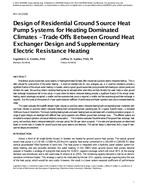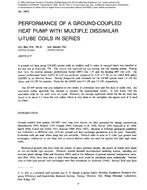Model Predictive Control (MPC) has gained attention in recent years for application to building automation and controls because of significantpotential for energy consumption and/or energy cost savings. MPC utilizes dynamic building and HVAC equipment models and input forecaststo estimate future energy usage and employs optimization to determine control inputs that minimize an integrated cost function for a specifiedprediction horizon. A dynamic model with reasonable prediction performance (e.g., accuracy and simulation speed) is crucial for a practicalimplementation of MPC. One modeling approach is to use whole-building energy simulation programs such as EnergyPlus, TRNSYS and ESPr,etc. However, the computational and set up costs for these models are significant and they do not appear to be suitable for on-lineimplementation. This paper presents the development of control-oriented models for the thermal zones in buildings. Low-order state-space modelsare identified from the designed input-output responses of thermal zones with disturbances from ambient conditions and internal heat gains. Ahigh-fidelity TRNSYS model of an office building was used as a virtual testbed to generate data for system identification, parameter estimation,and validation of the proposed model structures. This paper concludes with evaluations of the state-space model in terms of model accuracy forpredictive control design.
Citation: ASHRAE Conference Papers, Denver, CO
Product Details
- Published:
- 2013
- Number of Pages:
- 8
- File Size:
- 1 file , 1.1 MB
- Product Code(s):
- D-DE-13-C082


